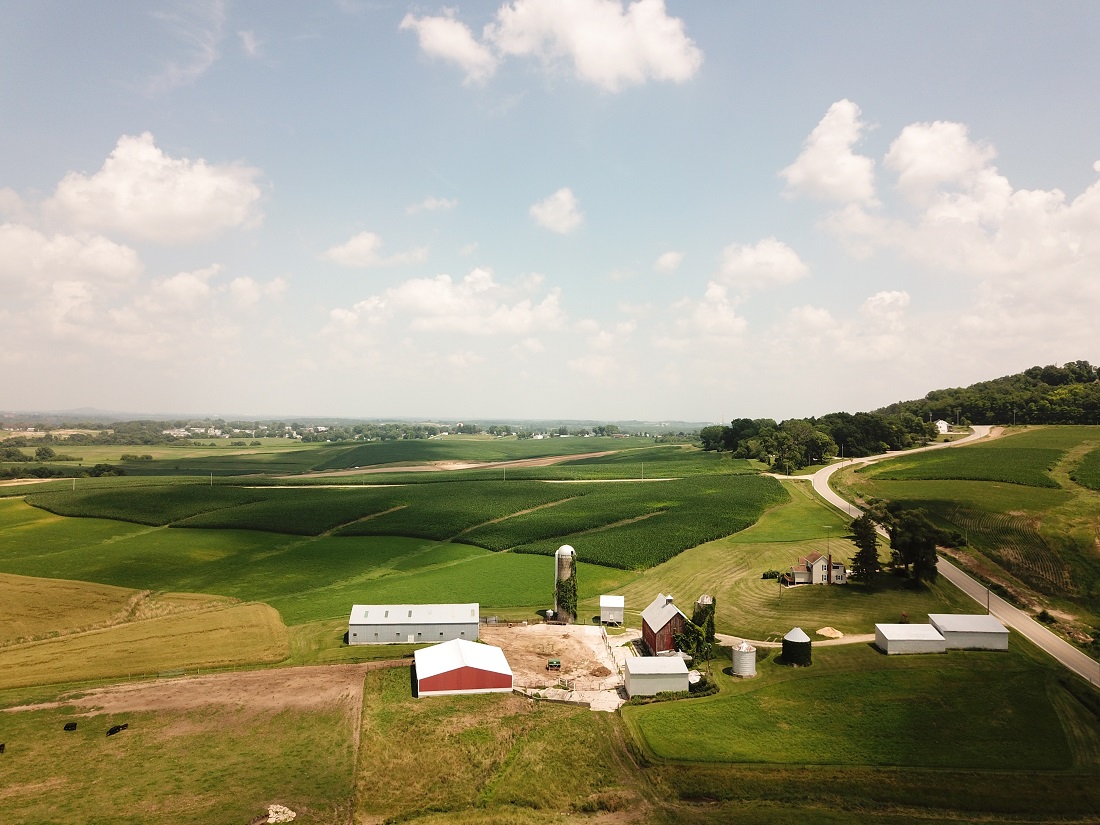Backlogs and Deportations of Irregular Asylum Seekers:
More Resources Needed For Faster Processing Of H&C PR Applications
Of the more than 40,000 migrants that have entered Canada irregularly in the past two years seeking refugee protection, only 33 per cent of claims have actually been processed. This according to new figures released by the federal government.
Since early 2017, 41,577 migrants have irregularly crossed the border into Canada through a forest path linking New York State and the province of Quebec.
In Canada, these refugee claims are handled by the Immigration and Refugee Board of Canada (IRB), however, there is currently a massive backlog, leading to lengthy delays in processing claims.
So far, just 6,885 migrants that have entered Canada irregularly since 2017 have been granted refugee protection, while 5,650 have been rejected. Tens of thousands of other applications currently remain in a queue and are still waiting to be processed.
Meanwhile, only 866 of the nearly 6,000 irregular asylum-seekers who were denied refugee protection in Canada have been deported. The reason for this is that removal orders can only be enforced once all legal avenues to try to remain in the country have been exhausted. Also delaying the deportation process could be missing travel documents and medical issues.
Refugee claimants might also be eligible for pre-removal risk assessments that will establish if forcing them to return to their home countries would put them in danger. This is an essential process to ensure that individuals are not sent back to their country if new evidence has emerged since their refugee claim was decided.
In addition, families often file a humanitarian and compassionate permanent residency application if they have a child and are eligible for the exemption to the 12-month bar for filing these applications. Unfortunately, these humanitarian and compassionate permanent residency applications can take around 3 years to be decided. In the meantime, even if an application is filed in a timely manner, CBSA can enforce a removal and it will be up to the individual to present a request for a deferral of removal.
The Canadian federal government is also aiming to improve the overall system by allocating $1.18 billion over the next five years to border security and processing claims. However, the government should also allocate more funds to IRCC for the processing of humanitarian and compassionate permanent residency applications so that meritorious application can be decided within a reasonable timeframe. This could also remove the need for families to fight their removal and bring an application to Court for a judicial review to bring forth a stay of removal motion.
Canadian Government Launches Pilot Program to Find Jobs for Immigrants in Rural Areas
Federal Government Aims to Curb Labour Shortage in Rural Canada With Immigrant Job Program
In an effort to combat labour shortages in rural Canadian communities, the federal government is launching a pilot program to find permanent homes and jobs for immigrants outside of the major cities.
Under current federal immigration programs, 78 per cent newcomers that come to Canada settle in big cities like Toronto, Montreal and Vancouver.
Even though many of these immigrants are highly skilled and educated, finding work they are qualified for in larger cities can be incredibly difficult.
The new Rural and Northern Immigration Pilot aims to help immigrants find work outside of the urban centres, and create welcoming environments for them in rural communities, while also curbing labour shortages in these rural areas.
The communities selected to participate in the pilot are:
- North Bay, Ontario
- Sudbury, Ontario
- Timmins, Ontario
- Sault St. Marie, Ontario
- Thunder Bay, Ontario
- Brandon, Manitoba
- Rhineland/Plum Coulee /Gretna/Altona, Manitoba
- Moose Jaw, Saskatchewan
- Claresholm, Alberta
- Vernon, British Columbia
- West Kootenay, British Columbia
Each was selected based on their economic need for immigration, the resources and community partners they had in place to help carry out the program, and whether the federal government already had existing newcomer settlement partners and resources in the community.
Collectively, the selected communities represent a sample of the regions across Canada to help plan a blueprint for the rest of the country.
The program will be driven by the communities themselves, meaning that they must identify what job opportunities are available, match applicants to jobs, assess prospective candidates, provide a welcoming community for immigrants, and connect immigrants to established members of the community and settlement services.
In West Kootenay alone, the project is expected to bring in 250 immigrants to help fill nearly 1,000 job vacancies by next year.
In order to be eligible, candidates must find employment and be endorsed by one of the participating communities.
Once the community endorses a candidate, they can apply for permanent residence. Once permanent residence is granted, they can move to the community and start working.
The government will start working with the 11 selected communities during the summer months to help identify potential candidates for permanent residence as early as fall 2019. However, the federal eligibility criteria that outlines who can apply for the program has not yet been made public.
It’s expected that newcomers will start arriving in the communities under the pilot program by 2020.
Matching Refugees With Prospective Employers
Despite Initial Challenges, Businesses Can Benefit from Hiring Refugees
For refugees forced to flee their homes due to war and persecution, Canada has provided them with a second chance to start over. But when it comes to getting back into the workforce, picking up where they left off is typically a major challenge.
Despite being highly skilled and qualified to work in various industries, many of the world’s 50 million refugees are unable to find work in their host countries, leading to increased hardship and difficulty integrating to their new surroundings.
Thankfully, here in Canada, several groups, programs, and organizations are working hard to help refugees find meaningful employment.
But before we dive into that, let’s take a look at some of the factors that make it difficult for refugees to find employment in Canada.
Ongoing Challenges Faced by Refugees Looking to Enter the Workforce
Language Barriers
The inability to speak English or French—Canada’s two official languages—is one of the biggest hurdles for refugees who have just landed on Canadian soil. Learning one of the official languages is crucial to labour-market integration, but according to the 2016 Canadian Census, only 20% of government-assisted Syrian refugees were able to speak English or French upon arrival in Canada. This means that before they can fully integrate, they must attend language classes, many of which have lengthy waitlists, according to the Globe and Mail.
Recognition of Foreign Credentials
Another major difficulty refugees experience when seeking employment in Canada is having their credentials recognized by Canadian institutions.
So, even if you were a teacher, doctor, engineer, etc., in your native country, your accreditation might not be transferable to Canada, making it difficult to find a job in your chosen field.
Also, in many cases, fleeing your country due to war means leaving home with little more than the clothes off your back. Making sure to grab a university diploma or certificate is often an afterthought. If you do manage to bring these documents with you to Canada, they must then be translated, which can end up being costly.
Job references are also tricky, as it can be difficult for employers to track them down. Quite often, the references themselves have fled. And if they can be found, there is usually a language barrier.
Bias and Discrimination
From navigating language barriers to cultural differences, hiring newcomers does present some challenges for employers.
And while addressing these issues typically only requires modest investments, many employers are unwilling to take a chance on refugees and navigate these unique circumstances.
Business Benefits of Hiring Refugee Employees
However, working through the initial challenges that come with hiring refugees can actually make for better managers and improve the overall work environment. As a result, this creates a more accepting and accommodating workplace and improves management’s capability to handle other diversity issues that may arise.
According to a report by the Fiscal Policy Institute and the Tent Partnership for Refugees, U.S. companies willing to hire refugees also experience higher retention rates and lower turnover.
Among the employers that were studied, 73 percent reported a higher retention rate for refugees compared to other employees. Refugees also had a turnover rate that was seven to 15 percent lower than for the overall workforce.
Companies that hire refugees also tend to develop an advantage when it comes to recruitment.
By overcoming the minor obstacles that come with hiring refugees from one particular country, employers are likely to see more refugees from that same community applying for jobs within the company. And by building these kinds of relationships with refugee communities, hiring logistics become simpler and more efficient, making it easier to start hiring from other groups.
Programs and Organizations Making an Impact
While many companies have yet to embrace the positives that come with hiring refugees, one organization is making waves by connecting refugees with employers that are willing to take them on.
The non-government organization, Talent Beyond Boundaries, has been working with Canada and Australia to launch pilot projects that match skilled refugees with employers and firms that are willing to hire workers from abroad.
So far, only two refugees have been placed in Canada, but many more could soon follow.
According to the Canadian Press, Immigration Minister Ahmed Hussen recently stated during a conference on World Refugee Day that he would like to "massively" ramp up the pilot in order for Canada to accept more refugees.
Canada has already accepted 28,100 refugees for permanent resettlement in 2018 and is expected to take in 29,950 by the end of this year.
Now it's for the private sector to follow suit, for both moral reasons and the business advantages.
Quebec To Fast Track Immigration for Skilled Workers
Immigrants With job Offers Will Jump to the Front of the Line Under Quebec’s New Immigration System
The province of Quebec is looking to combat a massive labour shortage by prioritizing skilled workers with job offers already lined up under its new immigration selection system.
Under the recently passed Bill 9, those wishing to immigrate to Quebec under the Regular Skilled Worker Program must now go through the new online portal, Arrima.
Before Arrima, Quebec’s immigration applications were approved on a first come first serve basis. But under the new rules, people with job offers, those who are already living in Quebec, and anyone willing to live and work outside major cities will be given priority to settle in the province.
How the process works is that applicants first must fill out an expression of interest form and provide information related to their work experience, credentials, education and language skills.
After reviewing the group of applicants, the government will send out invitations based on the labour market needs in different areas of Quebec. Applicants that have been selected can then submit an official immigration application and pay the required fees.
Applicants will be evaluated using a selection grid that awards points based on different factors and criteria. The process is designed to help determine a candidate’s potential for assimilating into Quebec society along with the labour market.
The selection factors and criteria include age, knowledge of French and English, employment history, education, your familial relationship with a Canadian Citizen, the number of children you have under the age of 22, capacity for financial self-sufficiency, and information about your spouse.
Once a request for permanent selection is submitted, there will be a six-month wait period before finding out if you have been accepted. Under the previous system, the wait time was as long as three years.
The new system will also allow employers to view candidates’ submissions and reach out to them directly via email with offers of employment. This feature is expected to be available by early 2020.
According to the Montreal Gazette, Quebec’s Immigration Minister Simon Jolin-Barrette explained that the new system would not only dramatically cut down the waiting period for newcomers, but also be a solution to the province’s high number of job vacancies.
Quebec is currently experiencing the worst labour shortage in all of Canada, with around 120,000 vacant positions reported at the beginning of 2019.
Premier François Legault recently announced that the province is aiming to accept between 49,500 and 52,500 immigrants by 2022.
Debate Continues Over U.S. Safety for Asylum Seekers
Immigration Experts Warn that the United States is No Longer Safe for Asylum Seekers
Despite the Liberal government’s continued claims that the United States is a safe destination for asylum seekers, immigration experts are speaking up about their concerns over changes and shifts in the U.S. asylum system.
The Canada-U.S. Safe Third Country Agreement (STCA) requires migrants to claim asylum in the first safe country they arrive in; under this agreement, someone making an asylum or refugee claim in the U.S. cannot make such a claim in Canada.
Exceptions to the STCA consider the importance of family unity, the best interests of children, and the public interest.
There are four exceptions to this agreement:
- Family members
- Unaccompanied minors
- Document holders
- Public interest
Even if immigrants qualify for one of these exceptions, refugee claimants must still meet all other eligibility criteria of Canada’s immigration legislation. For example, if a person seeking refugee protection has been found inadmissible in Canada on the grounds of security, for violating human or international rights, or for serious criminality, that individual will not be eligible to make a refugee claim.
Over the last two years, primarily due to the anti-immigration policies of President Trump in the United States, many individuals fleeing persecution or violence who would otherwise make a claim within the United States have flocked to unofficial border crossings. Roxham Road in southern Quebec is a popular location for such crossings and has been since early 2017.
It’s important to note that these crossings are not illegal, these claimants do not “jump the queue,” and these claimants (like all refugee and asylum claimants) are detained for rigorous screening. According to the United Nations High Commissioner for Refugees (UNHCR), Canada’s asylum system is not broken, the country is not facing a refugee crisis, and only 54% of claimants are ultimately recognized as refugees after they are heard before the Refugee Protection Division.
If the United States is a safe country, why are these people making the trip to these unofficial border crossings in hot Canadian summers and frigid Canadian winters?
Speaking to CBC News, Maureen Silcoff, an executive member of the Canadian Association of Refugee Lawyers, said, “There are serious problems with the asylum system in the United States right now.”
This is putting it mildly.
Since the election of Donald Trump, the U.S. has received serious criticism for its treatment of immigrants and refugees. In the past year alone, former U.S. attorney general Jeff Sessions said that domestic and gang violence are not legitimate reasons for claiming asylum, children were taken from their parents and detained in Cages at the U.S.-Mexico border, and Trump placed the blame for many of America’s problems squarely at the feet of immigrants and refugees.
More recently, critics have condemned U.S. immigrant and refugee detainment camps as “concentration camps.” A recent BBC headline asked the question, “Are US child migrant detainees entitled to soap and beds?”
Despite the Canadian federal government’s assessment of the U.S. as a safe country, Silcoff feels it’s time for reassessment in light of these developments and this news.
“We know because of what’s happened in the United States in the past few years that the system falls very short of those standards,” said Silcoff. “I think it’s just a matter of taking a hard look at not just the laws, but the practices and understandings, that people are at real risk of being sent back to their countries of origin and facing persecution.”





